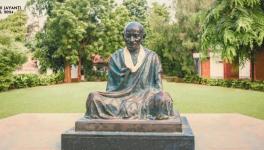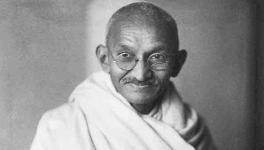Lord Ram: From Divine Spirit to Hindu Nationalist Icon

Image Courtesy: Flickr
This January 22, a massive spectacle was created when the Prime Minister Narendra Modi consecrated the idol of Lord Ram in Ayodhya. Declarations were made that Lord Ram is the soul of India and is the one who united India. Just before this ceremony some Muslim leaders warned that Muslim people should avoid travel on January 22, as there will be large-scale movement of Kar Sevaks during the day. As saffron flags flew all over including Ayodhya, as thousands of celebrities thronged Ayodhya most of the Muslims remained indoors, they feared the repeat of the mayhem that followed the destruction of Babri Mosque by Hindu nationalists forces, nearly three decades ago.
After the consecration ceremony, a bit later a Muslim graveyard was dug in Bihar, A Muslim was paraded naked in a town in South India and a saffron flag was hoisted on the Church. In Mira Road near Mumbai, a Ram Mandir Pran Pratishta procession was involved in an imbroglio in which a tempo driven by a Muslim and some Muslim shops were attacked. As the Prime Minister acted as high priest of Hinduism on one hand and there were massive displays of religiosity, people assembled to celebrate, on the other, there was a scare among Muslim community.
With this Lord Ram assumed a new symbol as one intimidating the religious minorities in India. The Lord, whose story was first written by poet sage Valmiki, had the distinction of Maryada Purushottam (man with dignity), who renounced his throne so that his father Dashrath could keep his promise given to his wife Kaikeyi.
Many versions of Lord Ram’s story are prevalent in South Asia. A.K.Ramanujan’s essay, 300 Ramayanas… is a classic piece telling us the diversities in various versions. In the Jataka (Buddhist) version Ram and Sita are also brother and sister, apart from being husband and wife. The reason for this was to keep the purity of the clan. In the Jain version, Lord is a believer of non-violence and propagator of Jain values. Popular and prevalent "Women's Ramayana Songs" of Telugu Brahmin women, put together by Rangnayakamma, present Sita as finally victorious over Ram and in these, Surpanakha succeeds in taking revenge over Ram. In Thai Ramkirti, or Ramkin (Ram's story), there is a twist in the tale and Shurpanakh's daughter decides to take revenge attributing her mother’s mutilation, primarily because of Sita. Here the focus is on Hanuman, who in this telling is neither devout nor celibate.
In India, the Ram story was popularised by Goswami Tulsidas, as he wrote it in Awadhi, lokbhasha, (people’s language) away from the Sanskrit, Devbhasha,(language of Gods) in 16th Century. After this Lord Ram became more popular and many Ram temples sprung up in North India. Interestingly Tulsidas, a devout Ram Bhakta, living in Ayodhya in 16th Century, does not mention any demolition of Ram Temple by Babur. Also, when he is threatened by Brahmins for writing Ramcharitmanas in Lokbhasha (Awadhi) he merrily says that he can very well live in a Mosque. (from Kavitavali, his autobiography).
The bhakti poets presented Ram as an embodiment of universal spirit, a formless God. For Kabir, the foremost among them, Ram is evoked in the nirgun (formless) sense, which he uses to denote both Brahman (God), supreme consciousness, and its individual expression as atman (Soul). As per him, Ram is the spark of consciousness within each of us.
Gandhi considered Ram to be the ultimate source of morality and spirituality. His powerful concept of the Lord was inclusive and saw Iswar (Hindu God) and Allah (Muslim God) being the same. This unique interpretation of Lord Ram by Gandhi was the underlying factor for laying the basis of fraternity in the Indian context. This also laid the foundation of his unique respect for people of all religions. This was part of the moral and ethical ground which united India.
Gandhi clarified his concept of Ram in an article in Harijan, 1946. He says “My Ram, the Ram of our prayers is not the historical Rama, the son of Dasharath, the King of Ayodhya. He is the eternal, the unborn, the one without a second.”
The values of Gandhi symbolised India’s ‘making into a nation’, symbolised the anti-colonial struggle and emergence of the values which are the foundation of the Indian Constitution. These are totally in contrast to what is being asserted by RSS-BJP as embodied in BJP-Modi’s politics. Ram Temple was not in the scheme of things of RSS till 1980s. When the communal forces started getting steam, the issue of Ram Temple was taken up.
The seeds of doubts about Ram temple having been destroyed by Babur were sown by the British. A.F. Beeveridge, while translating Baburnama added a footnote that probably there was a temple underneath the mosque. Serious scholarship shows that her writing was in tune with the British policy of ‘Divide and Rule’. Beveridge produces no historical evidence to support her assertion that the mosque was built at the site of a temple. Indeed, the general tenor of Babur's state policy towards places of worship of other religions hardly justifies Beveridge's inference.
In Babar's reign there was a strong growth of syncretic traditions, while he got the Jain temples of Gwalior demolished on the grounds of nude idols being there. Babar's will to Humanyun advises him to respect other religions, especially, Hinduism, as his subjects are Hindus. Babur himself was no bigot and he gives a good account of his respect for other religions in his Baburnama. The Supreme Court also did not support this thesis that there was a Ram Temple underneath.
As the agenda of RSS-BJP is to oppose the march towards social justice, it found it a very useful instrument to whip up popular hysteria around Ram Temple once the Mandal Commission was implemented. Kabir and Gandhi’s Ram has been transformed and politics of polarisation around the issue is peaking in the current scenario. With coming to power through this polarisation process now RSS-BJP are putting their full energy into promoting their image of the Lord into today’s political scenario. The occasion of consecration the Lord’s idol was heavily promoted all around in different institutions and social spaces. This was accompanied by the intimidation and political marginalization of the religious minorities.
Can we retrieve the spirit of Lord Ram as envisaged by the likes of Kabir and Gandhi, can we promote the moral, ethical and spiritual aspects of the religion rather than the ritualistic aspects being promoted in the current scenario?
The writer is a human rights activist and taught at IIT Bombay. The views are personal.
Get the latest reports & analysis with people's perspective on Protests, movements & deep analytical videos, discussions of the current affairs in your Telegram app. Subscribe to NewsClick's Telegram channel & get Real-Time updates on stories, as they get published on our website.
























